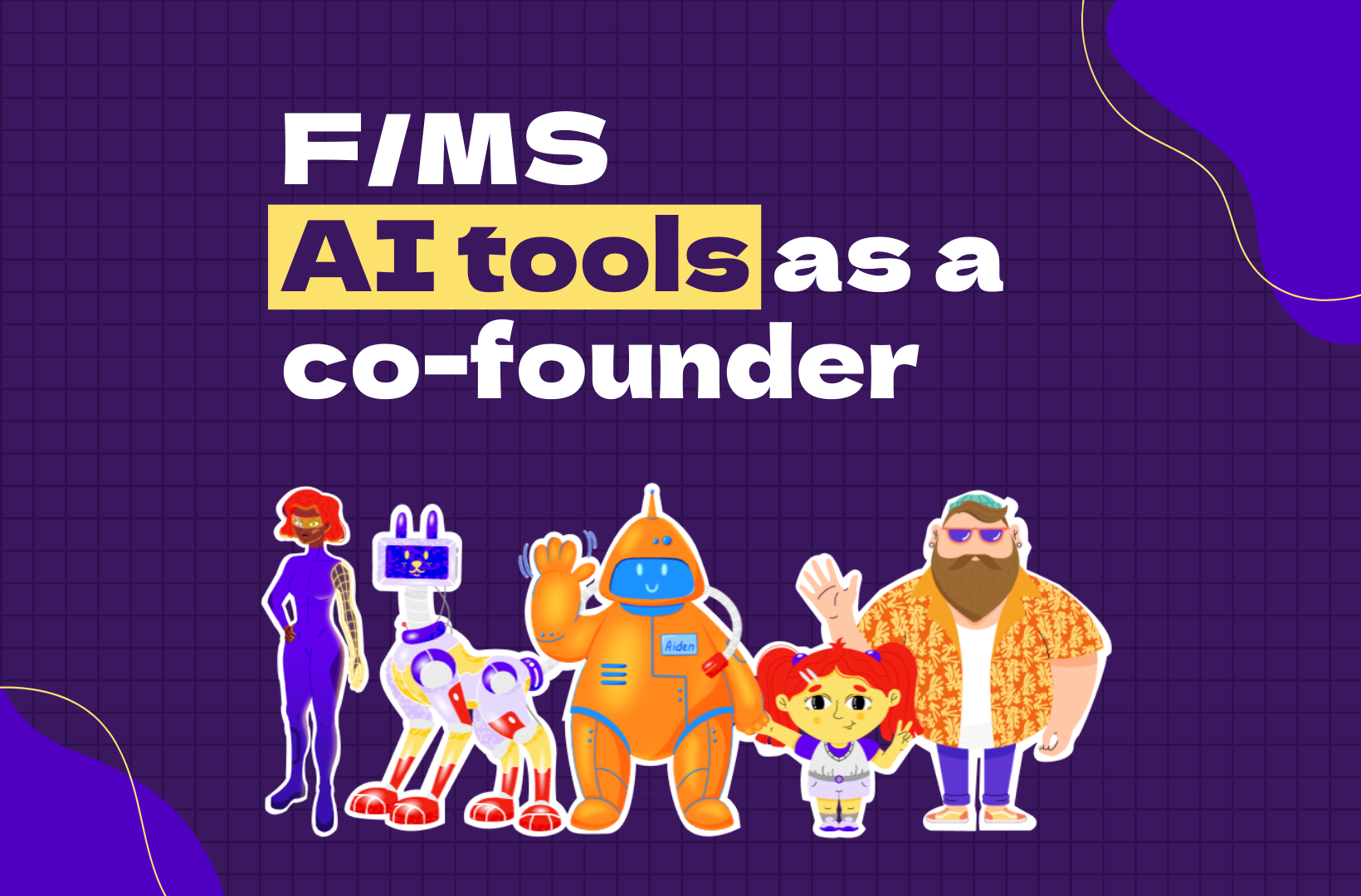Zero code and AI are a match made in heaven. Today we are going to share a case study of how we built an AI-powered product so that anyone can do the same.
Do you have an urge to become an entrepreneur? (You might want to analyse your entrepreneurial potential here). That's a great start! For everything else, there's Elona, the AI startup co-founder for you! As your AI co-founder, Elona delivers a powerful combination of expertise, support, and motivation to help you conquer the world of startups.
We love blending technology like blockchain and AI with zero code tools to come up with solutions that are easy to use and save a massive amount of time.
After we build a tool, we also like to educate other on how we did it by writing articles, adding modules into our free startup school, creating new quests in the startup game for women and eventually turning all the insights into an online course with a step by step tutorial on how to build a similar tool.
How did we manage to do it? The Mean Startup Method. And in this case study we are going to show you exactly how we did it, step-by-step.
What is the tool that we built?
Our GPT tool is called Annie and it is the ultimate solution for all of your product description needs. Simply feed it a product idea, and our tool will magically conjure up a stunning description that will make your customers want to buy it. No more struggling to find the right words - our tool has got you covered.
But our tool is more than just a description generator - it's a description magician. It can turn the dullest product into a sparkling gem, and make even the most boring product sound exciting and irresistible. And the best part? Annie is super easy to use, so even a non-technical starting entrepreneur can use it to boost their startup.
Try it now and see the magic of GPT technology in action. Stay ahead of the curve!
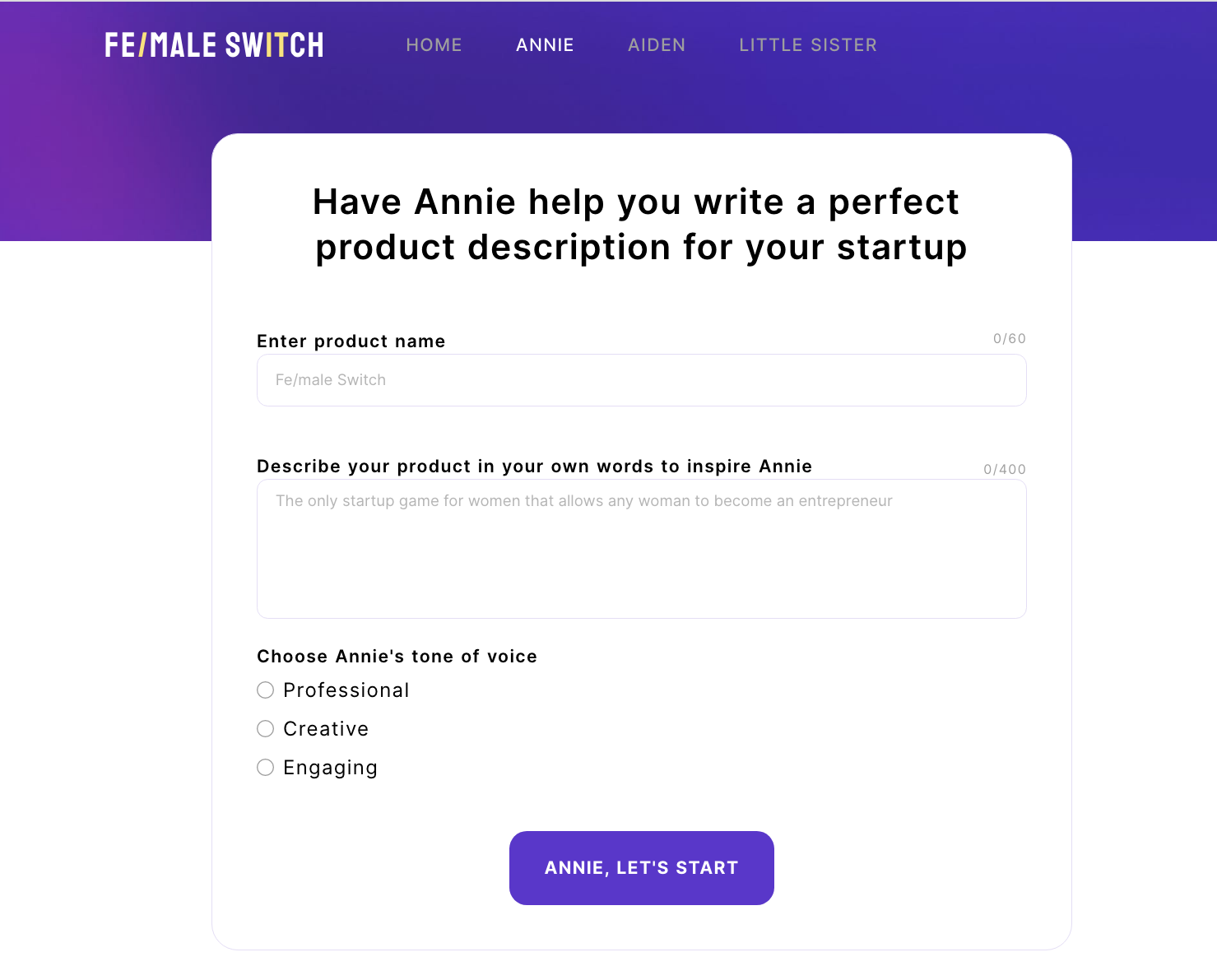
Why would entrepreneurs need a tool like that?
As a starting entrepreneur, you might choose to use a large language model like GPT (Generative Pretrained Transformer) to help you with a variety of tasks and challenges.
One potential use for GPT as a starting entrepreneur is to help with idea generation and brainstorming. GPT has the ability to generate text based on a given prompt, and can be trained on large amounts of data to produce high-quality and creative output. This could be useful for generating ideas for new products, services, or business models, and could help you to explore and evaluate a wide range of potential options.
Another potential use for GPT as a starting entrepreneur is to help with research and analysis. GPT can be trained on large amounts of data and can quickly process and understand complex information. This could be useful for conducting market research, analyzing competitors, or gathering data on potential customers. GPT could help you to quickly and efficiently gather and process the information you need to make informed decisions about your business.
Finally, GPT could also potentially be used as a substitute for a co-founder. While GPT is not a human and cannot fully replace the expertise and insights of a co-founder, it could potentially provide some of the same benefits, such as providing ideas and suggestions, conducting research and analysis, or even helping to generate content and marketing materials. In this way, GPT could be a useful tool for a starting entrepreneur who is working on their own and may not have access to a co-founder.
How many people did we need?
- Idea generator
- a UX/UI designer
- a zero coder
- an illustrator
How much time did we need?
- one day to do the design in Figma
- two days to build it on Bubble
- two days to create illustrations
Could we have done it quicker? Yes, if we disregarded the design and avoided illustrations. However, a user-friendly design and a tool with its own soul and character (Annie is something else, alright) is something that users will appreciate and remember.
How much money did we need?
- software costs for Figma, Bubble, Canva, a few hundred euros.
- human resources, around 1,000 eur
And you know what's the best part? Anyone can build a tool like this (well, with a more basic design and illustrations) if you learn the basics of Bubble.
We have a completely FREE startup school where you can learn how to use Bubble, a zero code tool for building web applications . Sign up for the free startup school and become an entrepreneur.
Let's talk about the process of building Annie
We start with Open AI, then move to Bubble and then add designs from Figma and spice it up with illustrations.
Part 1:
Register at Open AI to start using GPT-3.
GPT-3 (short for "Generative Pretrained Transformer 3") is a large-scale language processing model developed by OpenAI. It is not a standalone tool or platform, but rather a machine learning model that can be used as part of a larger system or application. If you want to use GPT-3, you will need to integrate it into your own project or use it through a platform or service that offers access to the model.
To integrate GPT-3 into your own project, you will need to use the GPT-3 API, which is provided by OpenAI. An API, or Application Programming Interface, is a set of protocols, routines, and tools for building software applications. It specifies how software components should interact and exposes functionalities that can be used by other applications. In the case of GPT-3, the API provides a way for anyone to access the capabilities of the model and use it in their own projects. Before you can use the API, you will need to sign up for an OpenAI API key. You can find detailed instructions on how to do this in the OpenAI API documentation.
- create an account
- check out the documentation
- play in the playground
This is what the playground looks like:
Davinci is the default GPT-3 model used because it typically produces the best results, especially for tasks that require understanding complex context and generating creative responses.
However, other GPT-3 models, such as Curie, Babbage, and Ada, may be more suitable for certain tasks and can be more cost-effective and faster to process requests.
Curie is a good choice for tasks such as translation, answering direct questions, or summarizing technical information.
Babbage excels at finding patterns in text and is well-suited for completing sentences or generating basic story plots.
Ada is the fastest GPT-3 model and is recommended for creative tasks that don't require precise answers.
Overall, choosing the right GPT-3 model for your specific needs can help you save costs and improve the speed and accuracy of your results. Davinci is a reliable all-around choice, but experimenting with the other models can help you find the best fit for your project.

On the page, you will see a text box where you can enter a prompt. This is the text that you want the GPT-3 model to generate output for.
Once you have entered your prompt, you can adjust the settings for the GPT-3 model, such as the maximum length (the length of the generated text and therefore the number of tokens to use) and the temperature. The temperature setting controls the randomness and creativity of the generated text. A higher temperature will result in more creative and unpredictable output, while a lower temperature will produce more predictable and repetitive output.
When you are ready, click the "Generate" button to generate the output text.
The generated text will appear in the text box below the prompt. You can read through the generated text and adjust the settings or prompt as needed to generate additional output.
Once you are happy with the settings like Temperature, Maximum Length, Frequency Penalty, etc., click on "View code" and then "Copy" it.

Click on your account logo and then on View API Keys in order to generate the keys that you need to connect your Bubble app to GPT-3 API.
NB: don't share your API key openly. It is a secret information as anyone who knows your API key can use the credits from your account.

Part 2:
Build your app in Bubble
Bubble is a platform for building web-based applications without writing any code. It allows users to create front-ends, flows, and databases using a visual, drag-and-drop interface.
Once you have your GPT-3 API key and the code , it's time to connect it to Bubble using the API connector.
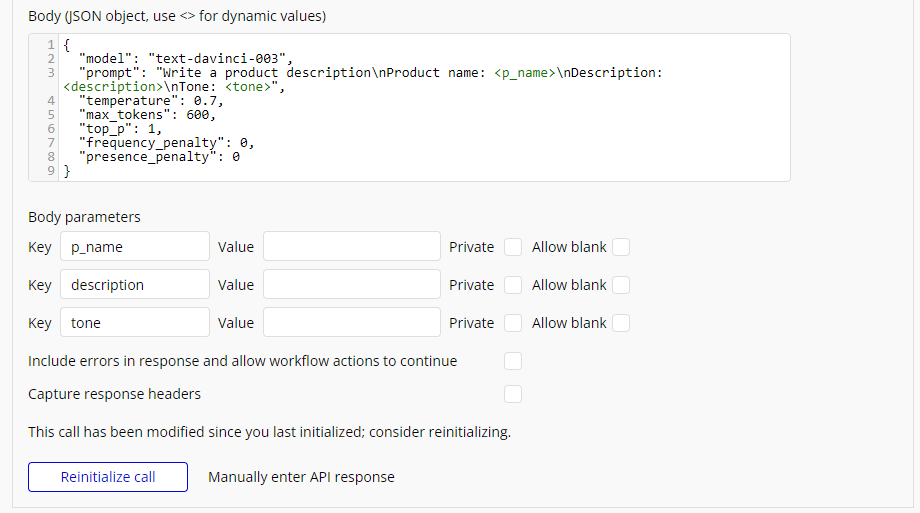
To create flows, you can use Bubble's workflow editor to create a series of steps that define how your application will function. This can include things like input validation, data processing, and interactions with external APIs.
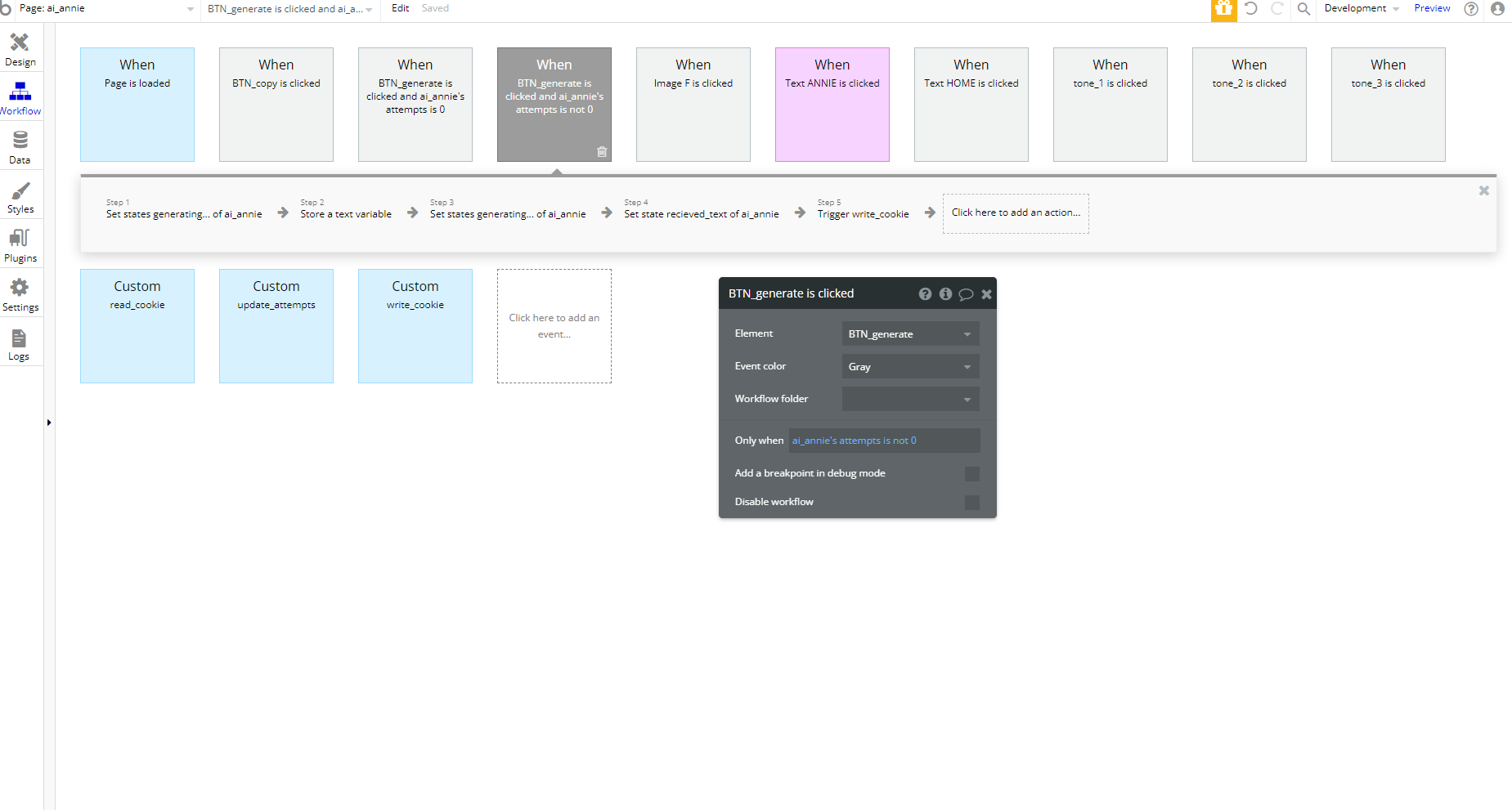
To create databases, you can use Bubble's data editor to define the data structures and relationships that will be used in your application. This can include things like user accounts, product listings, and order information.
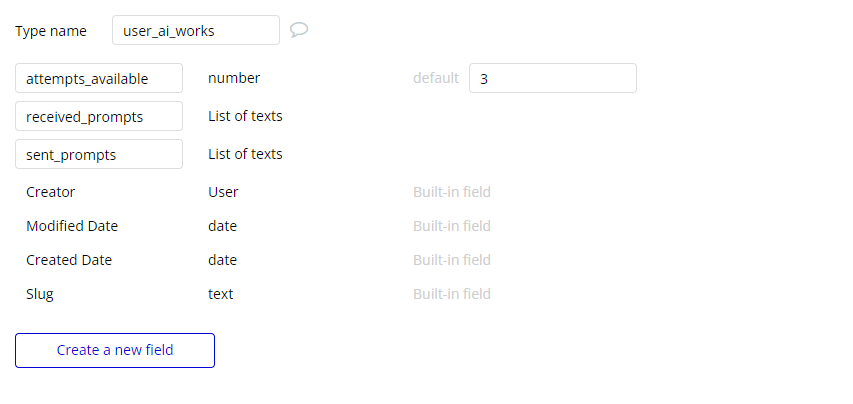
In Bubble, you can create front-ends by dragging and dropping different types of elements onto the page, such as text boxes, buttons, and images. You can customize the appearance and behavior of these elements using Bubble's visual editor.
Using Bubble teaches you to think it terms of "if a user want to do x, they need to press a button that would trigger the needed flow which would add something to the database or retrieve data from the database". Using an external API is similar to that, except you take data from somewhere else other than your own database. In our case, it's the GPT-3 database that we tap into.
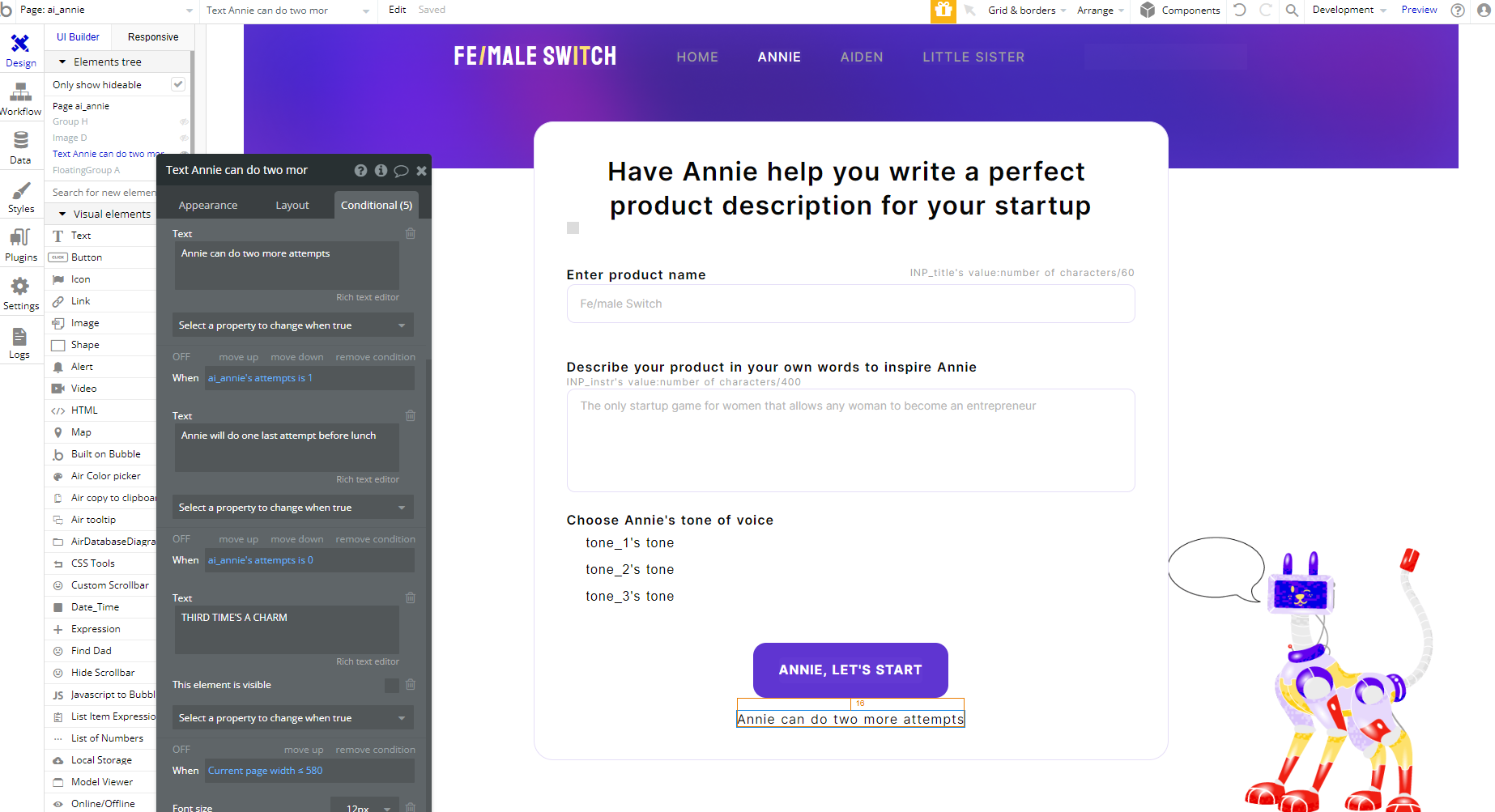
Part 3:
Create your design in Figma
Figma is a cloud-based design and prototyping tool that allows users to create interfaces, flows, and mockups for web and mobile applications. It is a popular tool among designers, as it allows for collaboration and real-time commenting, making it easier to work with others on design projects.
In Figma, you can create interfaces by adding different types of frames and objects to your project, such as rectangles, circles, text boxes, and buttons. You can also use pre-made components and templates to quickly create common interface elements.
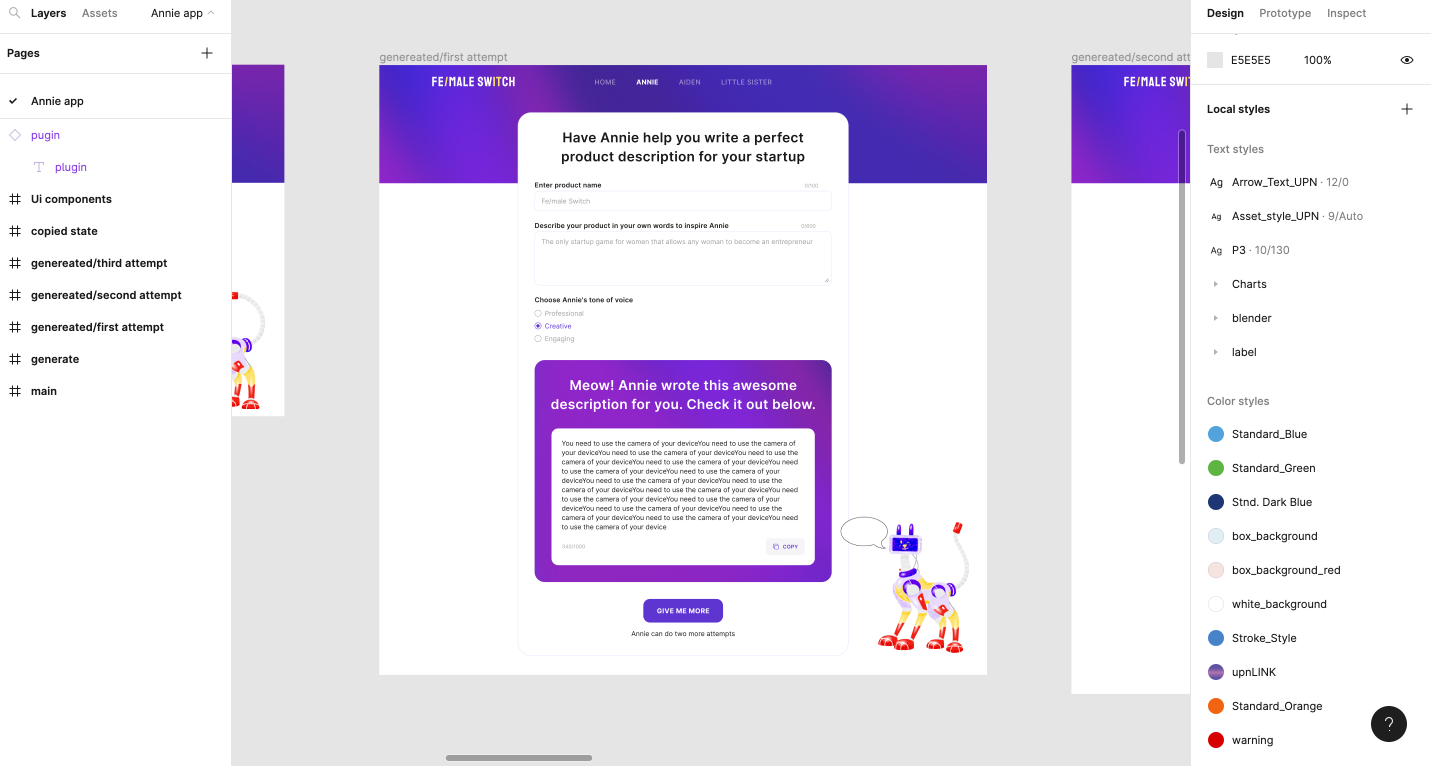
To create flows in Figma, you can use the prototyping tools to create a series of interconnected screens that simulate the user flow through your design. This allows you to test your design and see how it will work in practice.
Here are the steps for creating flows in Figma:
- Create a new project in Figma by selecting the "Create New File" option in the left sidebar.
- Add the screens or frames that will make up your flow by dragging and dropping them onto the canvas. You can use pre-made components and templates to quickly create common interface elements.
- Connect the screens in your flow by selecting a frame and clicking the "Prototype" tab in the right sidebar. Then, click the "+" icon to add a new link.
- In the link editor, choose the destination for the link by clicking on the frame or screen that you want to link to. You can also add transitions, triggers, and other interactions to your links to make them more dynamic.
- Repeat steps 3 and 4 for each screen in your flow, connecting them together to create a complete user journey.
- Preview your flow by clicking the "Play" button in the top-right corner of the screen. This will open a new window where you can click through your flow and see how it will work in practice.
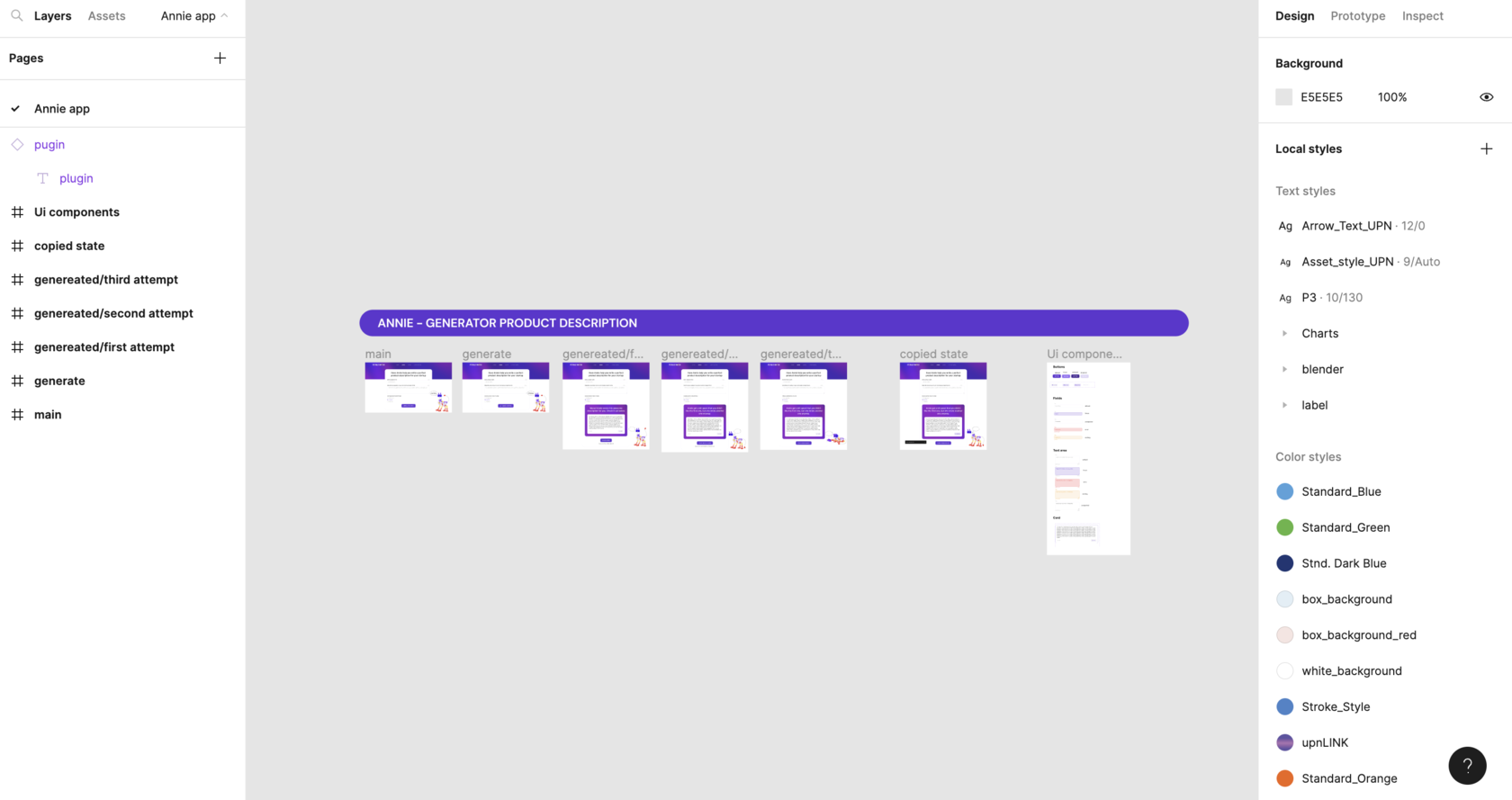
Once you have created your interface or flow, you can use Figma's prototyping tools to create a clickable mockup that simulates how the interface will function when it is built. This allows you to test your design and see how it will work in practice.
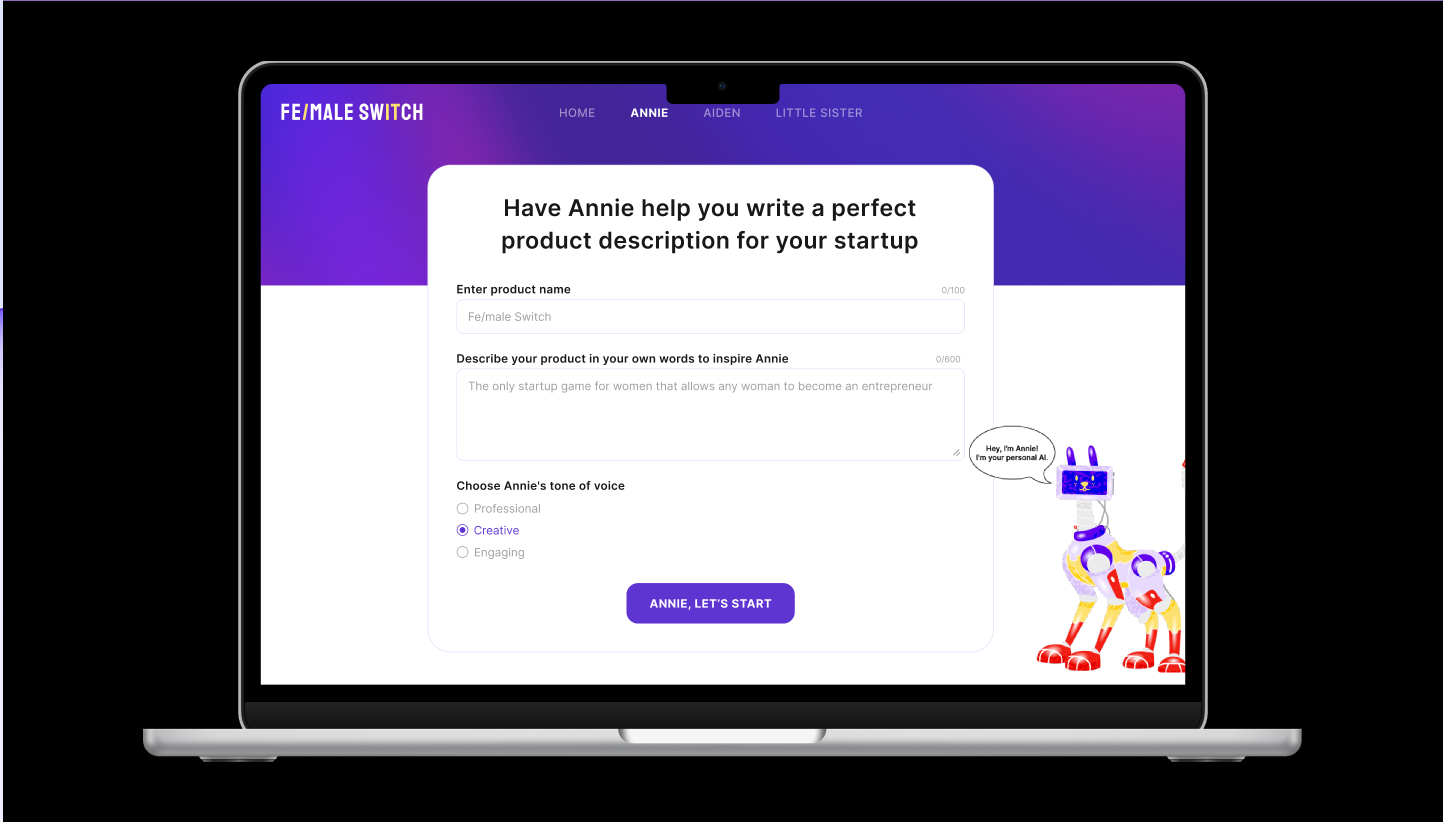
Part 4:
Draw your illustrations in Photoshop
PS. It's possible to omit this step altogether or use simpler tools like Canva to find and create illustrations. Alternatively, you can use AI to create visuals as well.
Start by gathering inspiration for your illustration. This can include collecting examples of other illustrations that you like, or brainstorming ideas for your own design.

Create a new document in Photoshop by going to File > New. Set the dimensions and resolution of your document based on the size and quality of the illustration that you want to create. Use the various drawing and painting tools in Photoshop to create a rough draft of your illustration. This can include the Pen Tool, Brush Tool, and Shapes Tool, among others.

Once you have a rough draft of your illustration, you can add color by using the various color tools in Photoshop, such as the Color Picker and the Swatches panel. You can also use the Layer Styles menu to add effects like drop shadows and gradients to your illustration.

Once you have a rough draft of your illustration, you can add color by using the various color tools in Photoshop, such as the Color Picker and the Swatches panel. You can also use the Layer Styles menu to add effects like drop shadows and gradients to your illustration.

The tool overview (alpha version)
This is the first tool in a series of GPT-powered startup co-creation tools that are to be added into the startup game for women, as well as be offered to the general public.
At the moment the tool generates a produce description based on the information that the user provides.
Who is the tool for?
- aspiring startup founders
- copyrighters
- digital marketers
- people learning English
The purpose of the tool is to serve as your brainstorming buddy and help you come up with creative product descriptions for your ideas in order to test and iterate until you like what you see.
Join our FREE Startup School and build your first startup without any technical skills!
Let's see how it looks and works
Introducing the ultimate solution for effortlessly creating captivating product descriptions - Annie the AI! With this tool, you can easily generate engaging and accurate descriptions for any product in just a few seconds, using cutting-edge natural language processing technology.
Our tool is perfect for aspiring entrepreneurs and solopreneurs who don't have time to spend hours writing product descriptions. With Annie, you can focus on other aspects of your business, while our tool handles the tedious task of writing product descriptions for you. And our tool is affordable and easy to use, making it accessible to businesses of all sizes and budgets.
Stop wasting your time and effort on writing product descriptions - try Annie now and see how it can help you to improve your product listings and increase sales. Try it now and see the magic of GPT technology in action.
Step 1:
- Enter your product name
- Describe it in your own words
- Choose a tone of voice that you prefer
- Hit the "Annie, let's start button"

Step 2:
Enjoy a few second wait while Annie is busy coming up with the first idea for your product description.

Step 3:
Read through the first version. Do you like it? Is it creative enough? Hit the "Copy" button and save the text in a notepad or google docs. You can always edit certain parts if Annie didn't get everything right on the first attempt.
Not satisfied with the outcome or just curious to see more? There are two things you can do:
- Change the product description in the input section by adding more details and instructing Annie to exclude something. Change the tone as well to see how the message changes.
- Hit the "Give me more" button.

Step 4:
Annie is a robot cat and she'd rather nap and eat instead of working, so don't mind her attitude. She performs best under pressure. And she will get a treat once she does a good job.
Read through this copy. Do you see the tone difference? This second attempt is in "Professional" tone and you can feel it.
NB. Copy it before you move on, as we don't save the results.
Shall we make Annie do another try? Push the "Third time's a charm" button and let's see.

Step 5:
Here it is, the last attempt that Annie was willing to produce before she demands her lunch. Why are cats always hungry???

The money side of the matter
What would the running costs of this tool be?
- Bubble costs (a monthly subscription)
- Open AI costs (token-based pricing for each generation)
Why is it important to understand the costs? If you don't you won't be able to choose a correct business model, a working pricing strategy and have what's called a positive unit economics. Basically, you need to understand how to become profitable with this tool. Unless, that's not your goal (yep, it's also possible if you use a tool as part of your marketing strategy and it is then a part of your marketing budget).
Our tool is currently free and the beta testing mode is ON. Later Annie will be offered as part of the paid tiers in the startup school and startup game.
At the moment we limit the amount of attempts in order to have as many people as possible try the tool and minimize the Open AI costs.
Check out the image below to understand more about the pricing of GPT-3.
The pricing for GPT-3 is based on the number of tokens that are used. A token is a unit of computation that is used by the GPT-3 model to generate text. The more tokens that are used, the more complex and detailed the generated text will be, and the higher the price, of course.
A prompt is a piece of text that is provided to the GPT-3 model as input. You can play around with wording to make it as succinct as possible, while getting satisfactory results.
There also also several models available that GPT-3 has been trained on, with some being more expansive while providing a better result.
To use GPT-3, you must first purchase tokens from OpenAI, the company that developed the model. The cost of tokens varies depending on the number that are purchased, with discounts available for larger purchases. Once the tokens are purchased, they can be used to generate prompts and text output from the GPT-3 model.
The good news is that GPT-3 is now in beta testing, so you can get 18 USD worth of tokens for FREE to play around with. It's a great opportunity to learn more about the tool and to figure out the costs behind each generation.

Show me the money!
One potential business model for a GPT tool that helps write product descriptions could be a subscription-based model. In this model, customers would pay a monthly or annual fee to access the tool and generate product descriptions. The fee could be based on the number of product descriptions that the customer needs to generate, with different pricing tiers for different levels of usage.
For example, customers who only need to generate a few product descriptions per month could pay a lower subscription fee, while customers who need to generate a large number of descriptions could pay a higher fee. This would allow the business to provide access to the tool at a reasonable price for customers with different needs and budgets.
Another business model for a GPT tool that helps write product descriptions could be a "freemium" model. In this model, the basic version of the tool would be available for free, allowing customers to generate a limited number of product descriptions each month. This would allow customers to try the tool and see its value, without having to pay any upfront fees.
To access additional features or to generate a higher number of product descriptions, customers could choose to pay for a premium subscription. This subscription would unlock additional capabilities and allow customers to generate a higher number of product descriptions each month. The premium subscription could also include additional services, such as editing and proofreading of the product descriptions.
The freemium model would allow the business to attract a large number of customers who are interested in trying the tool, and would also provide an opportunity to upsell customers to the premium subscription. This model could be particularly effective if the basic version of the tool provides enough value to customers that they are willing to pay for additional features and capabilities.
Overall, a freemium business model could be a creative and effective way to generate revenue from a GPT tool that helps write product descriptions. This model would allow customers to try the tool for free, while providing opportunities for the business to generate additional revenue from premium subscriptions and services.
Another potential revenue stream for the business could be from providing additional services, such as editing or proofreading of the product descriptions generated by the tool. Customers who want to ensure that their descriptions are error-free and of high quality could choose to pay extra for these services, providing additional revenue for the business.
Overall, a subscription-based model with additional services could be a viable business model for a GPT tool that helps write product descriptions. This model would allow the business to provide access to the tool at a reasonable price, while also generating additional revenue from services and higher-volume customers.
Are you ready to embark on an empowering startup journey with Fe/male Switch? Don't miss out on this golden opportunity to join our exclusive Startup Game designed specifically for women. Be a part of a vibrant community of trailblazing women who are changing the world, one AI-driven startup at a time. Tap into invaluable resources, learn from seasoned entrepreneurs, and unleash your true potential. Unleash your inner entrepreneur and conquer the startup world! Sign up now and get ready to make your mark on the future of AI-powered entrepreneurship. Let's rise and thrive together! 💡🚀👩💻
We decided to use freemium.
In a freemium business model for a GPT tool that helps write product descriptions, the free tier includes the following features:
- Access to the basic version of the tool, which allows customers to generate 30 product descriptions each month
- The ability to generate product descriptions for a variety of different products, using natural language processing technology
- Basic customization options, such as the ability to specify the tone of the product descriptions
- A simple and user-friendly interface, allowing customers to easily generate and copy their product descriptions
The paid tier, or premium subscription, could include the following additional features:
- The ability to generate an unlimited number of product descriptions each month
- Advanced customization options, such as the ability to specify more detailed information about the product and its features
- Additional services, such as editing and proofreading of the product descriptions, to ensure that they are error-free and of high quality
- Access to additional features and capabilities, such as the ability to generate descriptions for different languages or to integrate the tool with other e-commerce platforms
Overall, the free tier of a GPT tool that helps write product descriptions could include basic features and capabilities, while the paid tier would provide additional features and services for customers who need more advanced capabilities.
It's testing time!
Since the AI tools we built, we got exclusive access to GPT4, the latest and most advanced OpenAI model. Now all the tools have been upgraded and the performance in terms of quality has increased. The negative thing is that it's taking AI a bit longer to respond seeing as it need to process more information in one request.
Check it out for yourself:
- Go to the AI tools registration page and sign up.
- Play with it. You will have 3 attempts for each tool per day.
- Click on the feedback button if you would like to give a few of your thoughtd
- Fill in the form if you would like to request another tool
Surprise, surprise! Your new buddy Annie, isn't alone! We have a marvelous lineup of AI tools designed to make your entrepreneurial journey a breeze! Meet Aiden, Little Sister, Boris and Elona - AI tools that'll help you with naming your startup, generating fresh ideas, creating stunning logos and answering any startup-related question! Time to level up your startup venture with the help of these awe-inspiring AI minions! 🛠️
1. **Annie** - The Ultimate Product Description Tool 📝
Why struggle to find the right words for your product descriptions when Annie can magically conjure up stunning descriptions that will make your customers want to buy your product immediately? She's fast, clever, and the ultimate solution to all your product description needs! Give it a try today.
2. **Aiden** - Your Creative Startup Naming Guru 💡
Say goodbye to boring and uninspired startup names! With Aiden, you can generate the most unique and catchy names in a fraction of the time it would take you to brainstorm them. Impress your friends and colleagues with your clever choice of name, and let Aiden do the heavy lifting for you.
3. **Little Sister** - The Idea Generating Genius 🧠
Welcome Little Sister into your life, and say goodbye to staring at a blank page! As your ultimate idea-generating machine, Little Sister will revolutionize the way you come up with startup ideas, thereby making your entrepreneurial journey more exciting and fun.
4. **Boris** - The Pixel-Pushing Logo Creator 🎨
Bid farewell to mediocre logos! With Boris, our AI-based logo tool, you don't have to worry about design skills anymore. Provide well-crafted prompts and let Boris create the perfect-ish logo you've always dreamed of. Finish up the design by giving it a human touch on Canva (and remove the weird-looking text that AI loves to generate), blending the best of artificial intelligence and human creativity!
5. **Elona** - Your Startup Expert Consultant 🧐
Got questions related to startups and entrepreneurship? Look no further! As an AI startup expert tool, Elona Musk, offers you answers and valuable advice related to anything and everything regarding startups, ensuring you have a smooth sail to the finish line. Remember, happy entrepreneurship and zero code is her mantra!
We have a completely FREE STARTUP SCHOOL where you can learn about all things related to founding a startup. Sign up for the free startup school and get started immediately.

